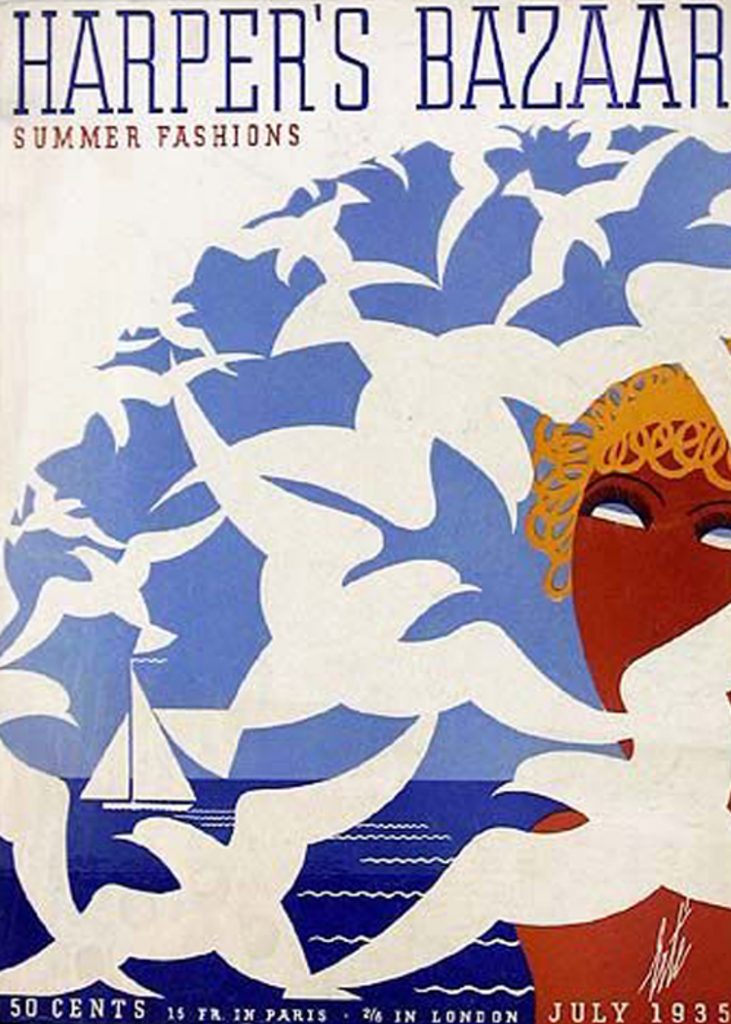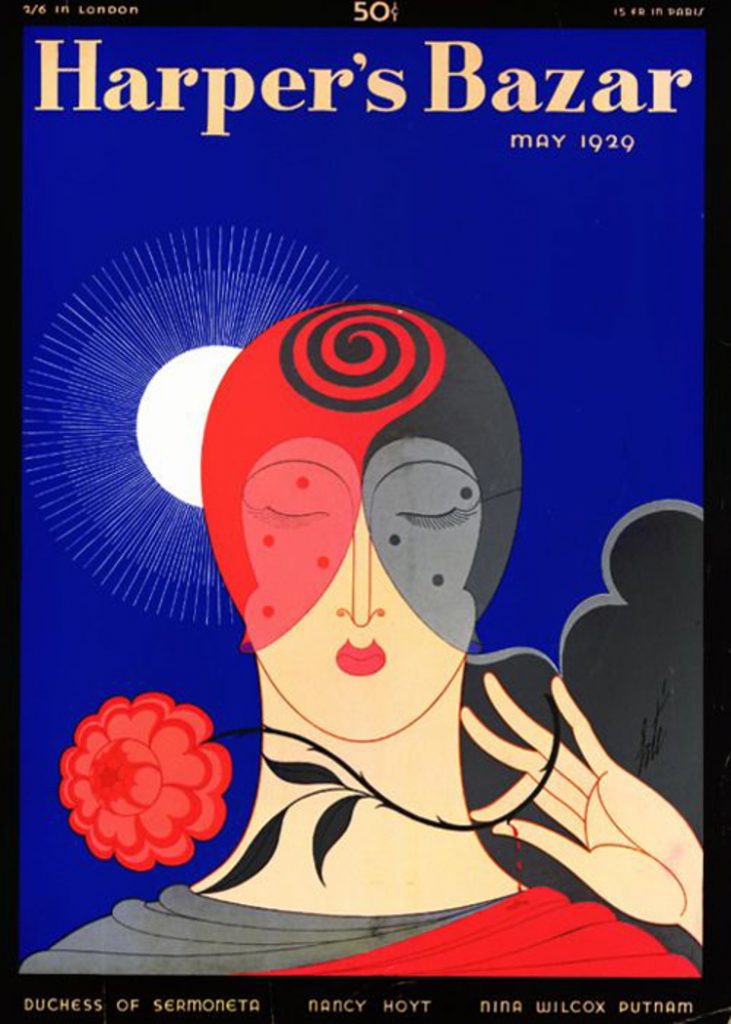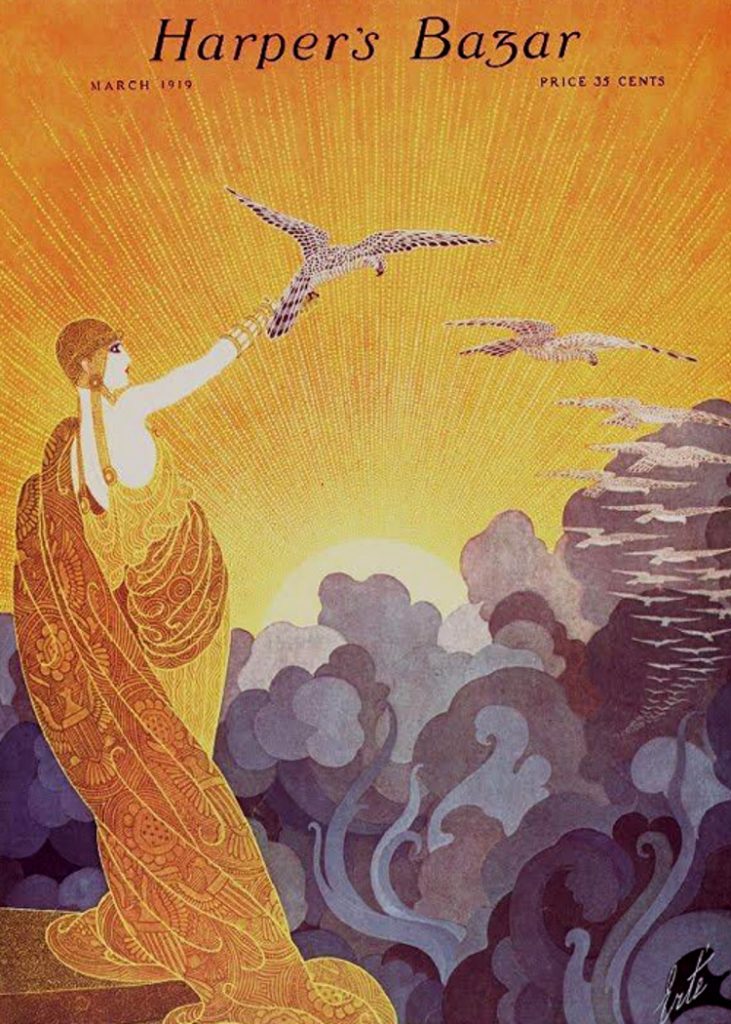
April 12, 2020
By Robin Postell
Considered to be one of the creators of the Art Deco movement, and an early designer in Harper’s Bazar and Vogue magazines, Romain Petrovich Tyrtov, known widely by his pseudonym, Erte’, remains one of the most significant luminaries of fashion and art in the 20th century.
Born in St. Petersburg in 1892, Erte’ hailed from regal Russia’s uppercrust. His father was an admiral in the czar’s Imperial Fleet and was non-plussed with his son’s desire to be an artist. This is why Romain Petrovich Tyrtov decided to recreate himself using the pseudonym, Erte’, which he took from the French pronunciation of his initials “R” and “T.”
Erte’ went to Paris at the age of 18 in 1912 and got a job as a fashion designer at a small couture shop, Caroline. However, he was told by the manager after a couple of weeks to never consider drawing as a long-term career because he had absolutely “no talent” for it.
Undeterred, Erte’ took a second job in Paris for the great couturier Paul Poiret. He remained there until the house was shuttered due to World War I.
At this point, Erte’ transitioned into designing sets and costumes in Paris throughout the 1920s and ‘30s for opera, theatre, ballets and revues, including the Folies Bergere and the Lido.
Erte’ spent decades sending his regular fashion designs to Harper’s Bazar from his Monte Carlo and Sevres residences between 1915 and 1936, to which he had an exclusive contract. This made him a household name to the magazine’s readers. He often illustrated the latest fashions in Paris which appeared in nearly 300 issues of the magazine, designing almost as many covers.
This relationship with Harper’s Bazar led to a Broadway career with George White’s company, Scandals. During the 1920s and 1930s, Erte’s highly-detailed gouaches were sent to New York for approval before being produced in Parisian workshops for American productions. Erte’ personally trained a team of copyists to tediously reproduce his drawings so that he could keep his originals.

Erte’ recalled in a 1976 interview at the age of 84 that he had used a “mile and a quarter of gold lame” for a Foilies Bergere show, which “formed a sort of semicircle of curtain and then came down and draped around the girls.”
That year the French government awarded him the title of Officer of Arts and Letters at a ceremony held at Maxim’s restaurant. The dancer Zizi Jeanmaire, whom he often costumed, presented Erte’ with a medal. Even in these late years, Erte’ couldn’t be upstaged, still full of vim and style wearing a velvet suit with a pastel mink coat garnished with gold and pearl tie pins, and gold chain necklaces and bracelets.
Erte’ also created a unisex fashion movement in 1928, with the attestation that men “dressed sadly.”
Erte’ remained vital until his death in 1990 at the age of 96, and was a frequent guest in New York City where the flames of his fame remained fanned by fashion denizens.





